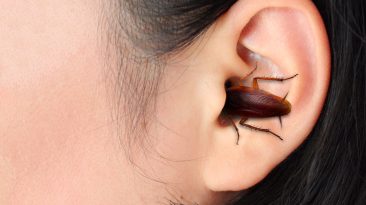There is nothing more relaxing than a warm bath after a long day. Only not when it’s a bathtub filled with fully-grown tapeworms. How many tapeworms would it take to fill a bathtub?
In what ways could these parasites infect you? And what effect would they have on your body?
You can get tapeworms if you eat undercooked meat from an infected animal. They are flat and segmented. But they don’t enter your body as worms. Tapeworms get inside in the form of eggs. They develop from larva to adult in one to three months. Inside of you.
And they aren’t tiny. Tapeworms can measure more than 25 m (80 ft) in length with a diameter of 2 mm (0.08 in). And they can live inside your body for up to 30 years. Are you still up for a tapeworm-filled bathtub? No?
Well, if you were to plunge into a tub full of tapeworms, be prepared. In a standard-sized bathtub, you’d be soaking in about 2,900 tapeworms.
And you could be wondering how all these worms got there. Usually, there are one or two tapeworms inside an infected human host. That means you’d need to extract these parasites from about 1,450 people.
But there’s no turning back now. Time to sink into that slimy bath. If there’s already water in the tub, all the tapeworms would be floating on the surface. Perfectly placed to crawl right into your mouth and slide down into your stomach.
This thought could make you queasy. But we have good news. Typically, tapeworms only enter your body if you swallow their eggs in contaminated water or undercooked meat and fish.
So even though you would be covered head to toe in worms, you wouldn’t need to worry about them getting inside your body. Just don’t go drinking the bathwater. Tapeworms are different from parasites like roundworms, which could infect you by entering the body through exposed skin, like your bare feet.
But if you take a drink of that water, a younger tapeworm could survive the journey from your stomach to the intestines. You wouldn’t even notice. But that tapeworm would begin to absorb the nutrients it needs from your bowels.
You could experience nausea, hunger or loss of appetite and diarrhea. If you were unlucky, you could experience more severe symptoms. The parasite could block your intestines. This would lead to intense abdominal cramps.
In an even worse scenario, tapeworm larvae could move out of your intestines and attach to other parts of your body. This could result in damage to your liver, eyes, heart and brain. But the most notable effect of being infected by a tapeworm would be weight loss. Whatever you eat, this worm would eat too.
One tapeworm-infected woman ate as many as 6,000 calories in one day. That’s three times your regular caloric intake. And she still lost weight.
This dramatic weight loss so inspires some people that they purposely infect themselves with the tapeworm egg pill. But I wouldn’t recommend giving any of this a try. A bath full of tapeworms is bad enough. But the risk you’d be taking by deliberately infecting yourself isn’t worth the weight loss.
Sources
- “Tapeworms In Humans: Causes, Symptoms, And Treatments”. 2021. Webmd.
- “Tapeworm Infection – Symptoms And Causes”. 2021. Mayo Clinic.
- “CDC – Dpdx – Taeniasis”. 2021. cdc.gov.
- “Tapeworm Diet: Weight Loss, Risks And Side Effects”. 2021. Healthline.
- “Average Bathtub Volume”. 2021. Average Bathtub Volume.
- ” Worms In Humans “. 2017. nhs.uk.

















